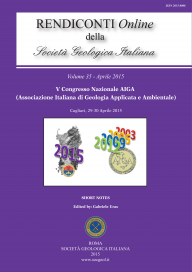
Terrestrial laser scanner for spatial snow depth and density measurements in mountain environment
Muriel Lavy (1), Gianpiero Amanzio (1), Stefano Crepaldi (1), Enrico Suozzi (2) & Marina De Maio (1)
(1) Politecnico di Torino - DIATI, Corso Duca degli Abruzzi, 24 - 10129 Torino, Italy. E-mail: muriel.lavy@polito.it
(2) ISE-NET S.r.l, Piazza Chanoux – 11010 Aosta (AO).
DOI: https://doi.org/10.3301/ROL.2015.94
Volume: 35/2015
Pages: 177-179
Abstract
Climate change is the main factor that induces alterations in the hydrological cycle. In this context, mountains represent the first indicators of climate change, because they respond rapidly and intensely to climatic and environmental modifications. Obtaining reliable scenarios on water resources availability is a prerequisite to planning management measures as a matter of fact snowfall and the resulting seasonal snow cover represent an important source of water, including surface and subsurface flows.
The applicability of terrestrial laser scanning (TLS) techniques to measure snow depth and snow cover was investigated in an area located in the Mascognaz Valley (Ayas municipality, Regione Autonoma Valle d'Aosta, Italy). First aim of this job is recognize the accumulation areas from melting areas through the generation of high dense digital snow elevation model. In this way is possible better understand the snowmelt process in mountain areas that contributes widely to the groundwater recharge. Secondly, the TLS was also used to analyze a snow cross section in order to define a correlation between the reflectance of laser signal and the density of snowpack. In fact, the snow density measure represents a crucial information for the snow water equivalent (S.W.E.) evaluation.
Finally, analyzing the spatial snow-depth distribution is important to individuate the potential avalanche-starting zones.
Keywords
Alps, Climate Change, Snow Avalanche, Snow Density, Snow-Melt, Snow Water Equivalent, Terrestrial Laser Scanner.
Get Full Text